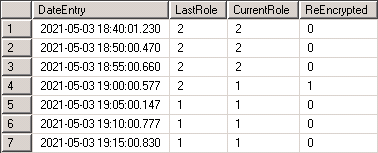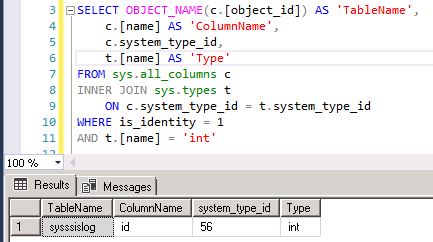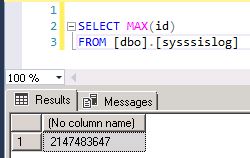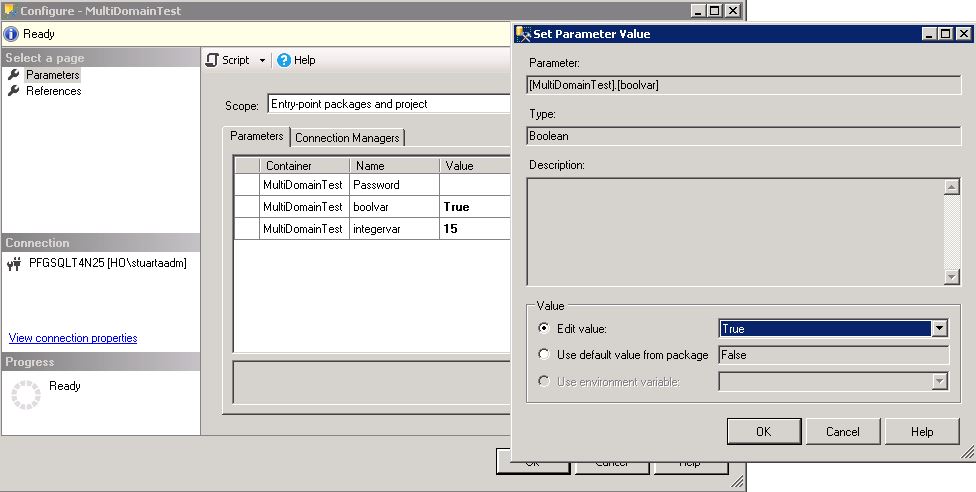Part 3 of a 4-part series on automating an SSISDB migration without using the SSISDB Upgrade Wizard. Parts one and two covered exporting MSDB and SSISDB projects, after which upgrading then deploying from Visual Studio is neccessary. This post assumes this is done and the next task is to copy the environments over, as they exist outside of SSIS projects and are thus not carried with them.
To automate this we have to do a few different things;
- Copy the environments
- Copy environment variables
- Copy environment references (between environment to project)
- Copy environment-object parameter links
I created the Copy-SSISEnvironments function shown below to perform these steps. It works at folder level, taking a source/target server and foldername. Though it’s possible to directly update the internal schema tables with the required values, I’m using the built-in catalog stored procedures which wrap and sanity check the required code for safety, namely;
- [catalog].[create_environment]
- [catalog].[create_environment_variable]
- [catalog].[create_environment_reference]
- [catalog].[set_object_parameter_value]
The function supports ‘relative’ references (that is projects referencing an Environment in the same Folder), string, boolean and numeric datatypes, de and re-encrypting encrypted strings, and both project and package-level object references. It doesn not support copying ‘absolute’ references (projects referencing an Environment in a different folder) or decrypting non-string datatypes as I had no need for that in our environment. The -WhatIf switch will simply output the SQL statements it would otherwise execute, and is recommended to run before use to check the output.
Example – Copy-SSISEnvironments -SourceServer SQLSSIS2014 -TargetServer SQLSSIS2017 -FolderName MySSISFolder
Github link to the Powershell-SSIS repo I’ve added this to.
function Copy-SSISEnvironments
{
param
(
[Parameter(position=0, mandatory=$true)][string]$SourceServer,
[Parameter(position=1, mandatory=$true)][string]$TargetServer,
[Parameter(position=2, mandatory=$true)][string]$FolderName,
[Parameter(position=3, mandatory=$false)][switch]$WhatIf
)
<#
.SYNOPSIS
Copies environments and references from one SSISDB folder to the same folder on another server
.DESCRIPTION
Copies environments - including variables, project references and object-variable links - from a source SSISDB folder to the same folder on a target server.
Works with string, numeric, boolean and encrypted string variables and relative project references.
Does not copy absolute references.
.PARAMETER SourceServer
Specifies the source SQL instance name
.PARAMETER TargetServer
Specifies the target SQL instance name
.PARAMETER FolderName
Specifies the SSISDB folder to copy the environment from and to. Case sensitive.
.PARAMETER WhatIf
Outputs generated SQL statements only - does not execute them or make any other changes.
.OUTPUTS
No direct outputs from function - updates target server SSISDB folder
.EXAMPLE
PS> Copy-SSISEnvironments -SourceServer SQLSSIS2014 -TargetServer SQLSSIS2017 -FolderName DailyETL
Copies environment data from SSISDB folder 'DailyETL' on server SQLSSIS2014 to server SQLSSIS2017
#>
Import-Module SqlServer
### Check that folder exists on both servers
$checkexistsquery = "SELECT 1 FROM [catalog].[folders] f
WHERE f.[name] = '$($FolderName)'"
try
{
$check = Invoke-Sqlcmd -ServerInstance $SourceServer -Database SSISDB -Query $checkexistsquery -ConnectionTimeout 5 -QueryTimeout 5 -ErrorAction Stop
}
catch
{
Write-Output "Error connecting to source server."
Write-Output $error[0]
return
}
if(!$check)
{
Write-Output "Error: Folder $($FolderName) doesn't exist on source server."
return
}
try
{
$check = Invoke-Sqlcmd -ServerInstance $TargetServer -Database SSISDB -Query $checkexistsquery -ConnectionTimeout 5 -QueryTimeout 5 -ErrorAction Stop
}
catch
{
Write-Output "Error connecting to target server."
Write-Output $error[0]
return
}
if(!$check)
{
Write-Output "Error: Folder $($FolderName) doesn't exist on target server."
return
}
$source_folder_id = 0
$target_folder_id = 0
$GetFolderIDQuery = "SELECT folder_id
FROM [catalog].folders
WHERE [name] = '$($FolderName)'"
# Get folder_id of source and target folders
$source_folder_id = (Invoke-Sqlcmd -ServerInstance $SourceServer -Database SSISDB -Query $GetFolderIDQuery -ConnectionTimeout 5 -QueryTimeout 5 -ErrorAction Stop).folder_id
$target_folder_id = (Invoke-Sqlcmd -ServerInstance $TargetServer -Database SSISDB -Query $GetFolderIDQuery -ConnectionTimeout 5 -QueryTimeout 5 -ErrorAction Stop).folder_id
$GetEnvironmentQuery = "SELECT environment_id, [name], [description]
FROM [catalog].environments
WHERE folder_id = '$($source_folder_id)'"
# Get environments from the source folder
$envs = (Invoke-Sqlcmd -ServerInstance $SourceServer -Database SSISDB -Query $GetEnvironmentQuery -ConnectionTimeout 5 -QueryTimeout 5 -ErrorAction Stop)
# Get environment references
$GetEnvironmentRefsQuery = "SELECT p.project_id, p.[name] AS 'ProjectName', er.reference_type, er.environment_name
FROM [catalog].projects p
INNER JOIN [catalog].environment_references er
ON p.project_id = er.project_id
WHERE p.folder_id = $($source_folder_id)"
try
{
$env_refs = Invoke-Sqlcmd -ServerInstance $SourceServer -Database SSISDB -Query $GetEnvironmentRefsQuery -ConnectionTimeout 5 -QueryTimeout 5 -ErrorAction Stop
}
catch
{
Write-Output "Error retrieving environment references"
$GetEnvironmentRefsQuery
Write-Output $error[0]
}
foreach($env in $envs)
{
# Create environment on target server
$CreateNewEnvironmentQuery = "EXEC [SSISDB].[catalog].[create_environment] @folder_name = '$($FolderName)', @environment_name = '$($env.name)', @environment_description = '$($env.description)'"
if($WhatIf)
{
Write-Output $CreateNewEnvironmentQuery
}
else
{
try
{
Invoke-Sqlcmd -ServerInstance $TargetServer -Database SSISDB -Query $CreateNewEnvironmentQuery -ConnectionTimeout 5 -QueryTimeout 5 -ErrorAction Stop
Write-Output "Created environment $($env.name)"
}
catch
{
Write-Output "Error creating environment"
Write-Output $CreateNewEnvironmentQuery
Write-Output $error[0]
return
}
}
# Get environment variables
$GetEnvironmentVarsQuery = "SELECT variable_id, [name], sensitive, [type], [description], [value]
FROM [catalog].environment_variables
WHERE environment_id = $($env.environment_id)"
$env_vars = (Invoke-Sqlcmd -ServerInstance $SourceServer -Database SSISDB -Query $GetEnvironmentVarsQuery -ConnectionTimeout 5 -QueryTimeout 5 -ErrorAction Stop)
# Loop over environment variables
foreach($env_var in $env_vars)
{
if($env_var.type -eq 'String')
{
# If variable is sensitive string, pull the encrypted value from [internal] table and decrypt it
if($env_var.sensitive -eq 1)
{
$getencryptedvaluequery = "SELECT [internal].[get_value_by_data_type](DECRYPTBYKEYAUTOCERT(CERT_ID(N'MS_Cert_Env_' + CONVERT(NVARCHAR(20), [environment_id])), NULL, [sensitive_value]), [type]) AS DecryptedValue
FROM [SSISDB].[internal].[environment_variables]
WHERE variable_id = $($env_var.variable_id)"
try
{
$decryptedvalue = (Invoke-Sqlcmd -ServerInstance $SourceServer -Database SSISDB -Query $getencryptedvaluequery -ConnectionTimeout 3 -QueryTimeout 5 -ErrorAction Stop).DecryptedValue
$CreateEnvironmentVarQuery = "EXEC [SSISDB].[catalog].[create_environment_variable] @environment_name = '$($env.name)',
@folder_name = '$($FolderName)',
@variable_name = '$($env_var.name)',
@Sensitive = 1,
@data_type = '$($env_var.type)',
@description = '$($env_var.description)',
@value = N'$($decryptedvalue)'"
}
catch
{
Write-Output "Failed to retrieve encrypted variable value"
$getencryptedvaluequery
Write-Output $error[0]
}
}
else
{
$CreateEnvironmentVarQuery = "EXEC [SSISDB].[catalog].[create_environment_variable] @environment_name = '$($env.name)',
@folder_name = '$($FolderName)',
@variable_name = '$($env_var.name)',
@Sensitive = 0,
@data_type = '$($env_var.type)',
@description = '$($env_var.description)',
@value = N'$($env_var.value)'"
}
}
elseif($env_var.type -eq 'Boolean')
{
if($env_var.value -eq 'True')
{
$bool_value = 1
}
else
{
$bool_value = 0
}
$CreateEnvironmentVarQuery = "EXEC SSISDB.[catalog].[create_environment_variable] @environment_name = '$($env.name)',
@folder_name = '$($FolderName)',
@variable_name = '$($env_var.name)',
@Sensitive = $([int]$env_var.sensitive),
@data_type = '$($env_var.type)',
@description = '$($env_var.description)',
@value = $($bool_value)"
}
else
{
$CreateEnvironmentVarQuery = "EXEC SSISDB.[catalog].[create_environment_variable] @environment_name = '$($env.name)',
@folder_name = '$($FolderName)',
@variable_name = '$($env_var.name)',
@Sensitive = $([int]$env_var.sensitive),
@data_type = '$($env_var.type)',
@description = '$($env_var.description)',
@value = $($env_var.value)"
}
if($WhatIf)
{
Write-Output $CreateEnvironmentVarQuery
}
else
{
try
{
Invoke-Sqlcmd -ServerInstance $TargetServer -Database SSISDB -Query $CreateEnvironmentVarQuery -QueryTimeout 5 -ConnectionTimeout 5 -ErrorAction Stop
Write-Output "Created variable $($env_var.name)"
}
catch
{
Write-Output "Error creating environment variable."
Write-Output $CreateEnvironmentVarQuery
Write-Output $error[0]
}
}
}
# Check if a reference exists for this environment, then for projects in target folder
foreach($env_ref in $env_refs)
{
if($env_ref.reference_type -eq 'A')
{
Write-Warning "Warning - Absolute reference detected. Add manually. Project name $($env_ref.ProjectName)"
}
elseif($env_ref.environment_name -eq $env.name)
{
$CheckProjectExistsQuery = "SELECT 1 AS 'Result' WHERE EXISTS (SELECT [name]
FROM [catalog].projects
WHERE folder_id = $($target_folder_id)
AND name = '$($env_ref.ProjectName)')"
#### Add reference for $env_ref.ProjectName
try
{
$exists = (Invoke-SqlCmd -ServerInstance $TargetServer -Database SSISDB -Query $CheckProjectExistsQuery -ConnectionTimeout 5 -QueryTimeout 5 -ErrorAction Stop).Result
if($exists -eq 1)
{
# Add environment reference for this project
$CreateEnvironmentRefQuery = "EXEC [SSISDB].[catalog].[create_environment_reference] @environment_name = '$($env.name)',
@project_name = '$($env_ref.ProjectName)',
@folder_name = '$($FolderName)',
@reference_type = R,
@reference_id = NULL"
if($WhatIf)
{
Write-Output $CreateEnvironmentRefQuery
}
else
{
try
{
Invoke-Sqlcmd -ServerInstance $TargetServer -Database SSISDB -Query $CreateEnvironmentRefQuery -ConnectionTimeout 5 -QueryTimeout 5 -ErrorAction Stop
Write-Output "Created reference between $($env_ref.ProjectName) and $($env.name)"
#### Set object parameters to use environment variables where linked
$getobjectparamsquery = "SELECT object_type, [object_name], parameter_name, referenced_variable_name
FROM catalog.object_parameters
WHERE project_id = $($env_ref.project_id)
AND value_type = 'R'"
$object_params = Invoke-Sqlcmd -ServerInstance $SourceServer -Database SSISDB -Query $getobjectparamsquery -ConnectionTimeout 3 -QueryTimeout 5 -ErrorAction Stop
foreach($object_param in $object_params)
{
if($object_param.object_type -eq 20) # Project parameter
{
$setobjectparamquery = "EXEC [catalog].[set_object_parameter_value]
@object_type = $($object_param.object_type),
@folder_name = '$($FolderName)',
@project_name = '$($env_ref.ProjectName)',
@parameter_name = '$($object_param.parameter_name)',
@parameter_value = '$($object_param.referenced_variable_name)',
@value_type = 'R'"
}
elseif($object_param.object_type -eq 30) # Package parameter
{
$setobjectparamquery = "EXEC [catalog].[set_object_parameter_value]
@object_type = $($object_param.object_type),
@folder_name = '$($FolderName)',
@project_name = '$($env_ref.ProjectName)',
@parameter_name = '$($object_param.parameter_name)',
@parameter_value = '$($object_param.referenced_variable_name)',
@object_name = '$($object_param.object_name)',
@value_type = 'R'"
}
try
{
Invoke-Sqlcmd -ServerInstance $TargetServer -Database SSISDB -Query $setobjectparamquery -ConnectionTimeout 3 -QueryTimeout 5 -ErrorAction Stop
Write-Output "Linked parameter $($object_param.parameter_name) to env var $($object_param.referenced_variable_name)"
}
catch
{
Write-Output "Error linking parameter."
$setobjectparamquery
Write-Output $error[0]
}
}
}
catch
{
Write-Output "Error creating environment reference."
$CreateEnvironmentRefQuery
Write-Output $error[0]
}
}
}
}
catch
{
Write-Output $CheckProjectExistsQuery
Write-Output $error[0]
}
if($WhatIf)
{
#### Set object parameters to use environment variables where linked
$getobjectparamsquery = "SELECT object_type, [object_name], parameter_name, referenced_variable_name
FROM catalog.object_parameters
WHERE project_id = $($env_ref.project_id)
AND value_type = 'R'"
$object_params = Invoke-Sqlcmd -ServerInstance $SourceServer -Database SSISDB -Query $getobjectparamsquery -ConnectionTimeout 3 -QueryTimeout 5 -ErrorAction Stop
foreach($object_param in $object_params)
{
if($object_param.object_type -eq 20)
{
$setobjectparamquery = "EXEC [catalog].[set_object_parameter_value]
@object_type = $($object_param.object_type),
@folder_name = '$($FolderName)',
@project_name = '$($env_ref.ProjectName)',
@parameter_name = '$($object_param.parameter_name)',
@parameter_value = '$($object_param.referenced_variable_name)',
@value_type = 'R'"
}
elseif($object_param.object_type -eq 30)
{
$setobjectparamquery = "EXEC [catalog].[set_object_parameter_value]
@object_type = $($object_param.object_type),
@folder_name = '$($FolderName)',
@project_name = '$($env_ref.ProjectName)',
@parameter_name = '$($object_param.parameter_name)',
@parameter_value = '$($object_param.referenced_variable_name)',
@object_name = '$($object_param.object_name)',
@value_type = 'R'"
}
$setobjectparamquery
}
}
}
}
}
}





